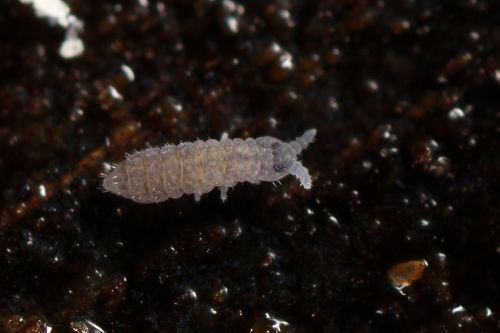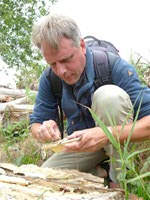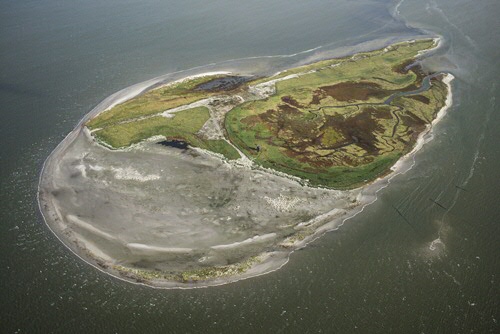New springtail species discovered on Griend in the Netherlands
A new animal species for the Netherlands has been discovered on the uninhabited Wadden Sea island of Griend. It is a type of springtail. The animal, which measures about 0.8 millimetres, was found in the debris at the high water mark. ‘It’s wonderful news’, says ranger Erik Jansen of Natuurmonumenten, the society for the preservation of nature in the Netherlands. ‘He that despises the small is not worthy of the great.’ Springtails are animals that resemble insects but form their own order. The type found is rare in Europe and has never before been seen in the Netherlands.

‘Baltische driedoorntje’

Professor Matty P. Berg, professor by special appointment for Soil Flora and Natural Ecosystem Dynamics at the UG, found the springtail during research on Griend. ‘I found one specimen where the dunes turn into mudflats, in thick debris at the high water mark’, Berg enthusiastically relates. He is one of the few experts on this species in the Netherlands. ‘It is a specimen of Friesea baltica.’ Berg suggests giving the springtail the Dutch name ‘Baltische driedoorntje’. ‘The species is native to the Baltic region and has three prongs on top of its abdomen.’
Predatory existence
The ‘Baltische driedoorntje’ lives along the coast, in sandy dune grasslands and dunes. Just like other springtails, the animal has a forked appendage at the end of its body which is used for jumping away from danger. ‘We suspect that it is a predator’, says Berg. ‘That is unusual among springtails – most of the species mainly eat fungi. The ‘Baltische driedoorntje’ has mouth parts that indicate a predatory existence. It probably eats nematodes and the eggs of insects and other bottom-dwellers.
Griend – a gem of nature
Natuurmonumenten has been managing Griend for over a hundred years. The island is located halfway between Harlingen and Terschelling and is very important for nesting seagulls and sandwich terns. During high tide, many migratory birds such as sanderlings, bar-tailed godwits and red knots rest up on Griend. During the breeding season, bird wardens ensure the island remains undisturbed. ‘We conduct research on Griend to ensure proper management of the island’, explains Jansen. ‘Discovering a new species is a nice bonus.’ In 2007 the bird wardens rediscovered a moth that had been thought to be extinct in the Netherlands, the Fenn’s Wainscot (Protarchanara brevilinea).

Springtails
Springtails usually live in or on top of soil. They thrive not only in nature reserves, but also in gardens. ‘They are useful animals’, explains Berg. ‘Most species eat rotting plant remains and fungi and thus help the natural decay process. In turn, springtails are eaten by insects and spiders.’ If the conditions are suitable for springtails, they can be present in huge numbers.
| Last modified: | 12 March 2020 9.22 p.m. |
More news
-
03 April 2025
IMChip and MimeCure in top 10 of the national Academic Startup Competition
Prof. Tamalika Banerjee’s startup IMChip and Prof. Erik Frijlink and Dr. Luke van der Koog’s startup MimeCure have made it into the top 10 of the national Academic Startup Competition.
-
01 April 2025
NSC’s electoral reform plan may have unwanted consequences
The new voting system, proposed by minister Uitermark, could jeopardize the fundamental principle of proportional representation, says Davide Grossi, Professor of Collective Decision Making and Computation at the University of Groningen
-
01 April 2025
'Diversity leads to better science'
In addition to her biological research on ageing, Hannah Dugdale also studies disparities relating to diversity in science. Thanks to the latter, she is one of the two 2024 laureates of the Athena Award, an NWO prize for successful and inspiring...
